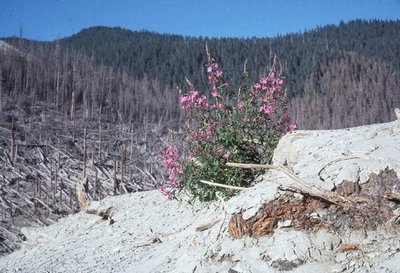May 13, 2010
Mark 30th anniversary of eruption of Mount St. Helens at Burke Tuesday
May 18 marks the 30th anniversary of the eruption of Mount St. Helens, and scientists to this day use what’s being learned there to challenge established thinking about how landscapes evolve and rebound — even from something so bleak that UW biologist John Edwards, who visited St. Helens within weeks of the eruption, said, “The sky was overcast, gray and everywhere you looked was gray. It felt like your color vision had been turned off.”
And what is being learned at Mount St. Helens by UW researchers also helps us better understand such things as the behavior of the ash cloud that spewed out of the volcano beneath the Eyjafjallajokull glacier in Iceland. (See a summary of the research here.)
Three UW faculty members and a former naturalist with the National Park Service will talk Tuesday, May 18, about what’s been learned during an event at the UW’s Burke Museum of Natural History and Culture. From 6 to 9 p.m., there will be displays of plants and animals collected from the blast zone for research and four talks starting at 6:15 p.m.
UW presenters are Roger del Moral, professor of biology, talking about how ecosystems reassemble after natural disasters; Olivier Bachmann, assistant professor of Earth and space sciences, talking about how St. Helens informs our understanding of volcanoes today; and Rod Crawford, curator of arachnids at the Burke, who will discuss the unexpected magnitude of spiders dispersed by air following the eruption causing him to say, “A succinct way to put it would be, ‘It’s raining spiders!'”
The event is being co-sponsored by the department of biology and the department of Earth and space sciences.



